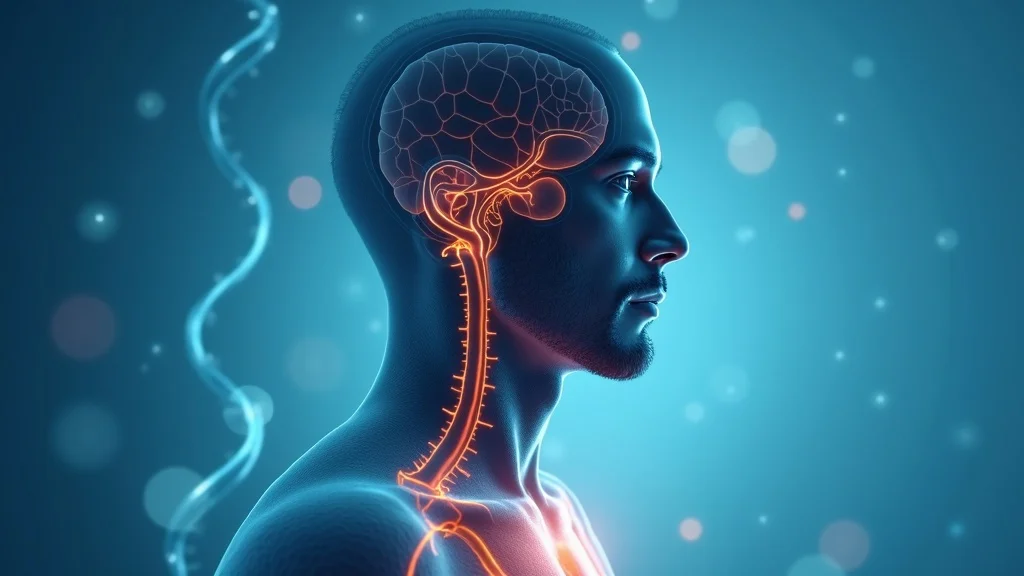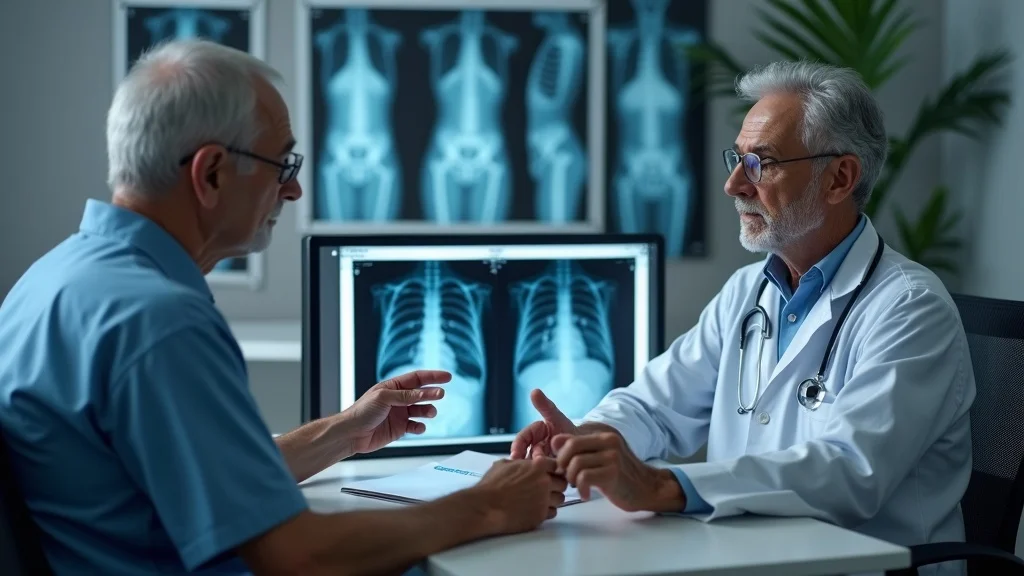Did you know that nearly 40% of men over 45 experience testosterone deficiency symptoms, yet most wait years before seeking help? Recognizing the earliest signs and symptoms of low testosterone can transform long-term health and quality of life. This comprehensive guide will help you spot the warning signals of testosterone deficiency symptoms before they progress, understand the science behind male hypogonadism, and discover why natural solutions lead the way for safer, lasting improvements in well-being.
Startling Facts: Testosterone Deficiency Symptoms Often Go Unnoticed
“Nearly 40% of men over 45 experience testosterone deficiency symptoms, yet most wait years before seeking help.” – Endocrinology Journal

Despite the significant number of men affected by low testosterone, testosterone deficiency symptoms remain largely undiagnosed or misattributed to aging or other health conditions. Early symptoms of low testosterone, such as persistent fatigue, changes in body composition, or decreased interest in sex—often labeled as normal aging or male menopause—can become more disruptive and challenging to treat over time if they're ignored. Recognizing these signs and symptoms is critical for effective intervention, as studies confirm that men who seek help earlier are more likely to recover their vitality, maintain healthy relationships, and reduce their risks for serious illnesses associated with androgen deficiency.
What You'll Learn About Testosterone Deficiency Symptoms
- The most common testosterone deficiency symptoms and how to spot them early
- The difference between low testosterone (male hypogonadism) and male menopause
- Diagnostic approaches and treatment options for androgen deficiency
- Evidence-based reasons why natural testosterone supplements are preferred
Understanding Testosterone Deficiency Symptoms: Key Definitions and Concepts
Defining Low Testosterone and Testosterone Levels
Testosterone is the primary male sex hormone, crucial for muscle development, bone density, mental sharpness, and a robust sex drive. Low testosterone levels can arise from aging, disease, lifestyle, or genetic factors, leading to various signs and symptoms collectively known as testosterone deficiency symptoms. Clinically, testosterone is measured through blood tests—ideally first thing in the morning—where levels below 300 ng/dL in a healthy male frequently indicate a problem. Understanding your hormonal health is essential because even a modest reduction in testosterone level can lead to cascading health consequences.
It's critical to note that testosterone levels aren’t static—they fluctuate throughout the day and decline naturally with age. However, a sudden drop or persistent low testosterone is a red flag. Because symptoms of low testosterone often mimic those of other health conditions, like depression or metabolic syndrome, they may go undetected unless you know what to look for. For men and their loved ones, recognizing deterioration in strength, motivation, or emotional balance can prompt the necessary clinical checks and timely treatment.
What is Male Hypogonadism and How Is It Related to Testosterone Deficiency Symptoms?
Male hypogonadism is a medical condition in which the testes fail to produce enough testosterone or sperm, resulting in testosterone deficiency symptoms that may manifest physically, mentally, and emotionally. This deficiency is diagnosed either as primary hypogonadism—originating in the testes—or secondary hypogonadism, caused by the pituitary gland failing to stimulate testosterone production. Symptoms often overlap with what’s known as male menopause, a term used to describe age-related hormonal changes in men, though the clinical mechanisms are distinct.
The relationship between male hypogonadism and low testosterone levels is clear: hypogonadism is the root cause for many cases of androgen deficiency. Factors such as genetic conditions (including Klinefelter syndrome), injury, chronic illness, or even certain medications can disrupt normal hormone production. Unfortunately, men often endure years of undiagnosed hypogonadism, suffering in silence due to stigma, misinformation, or confusion about normal vs. abnormal aging.

The Androgen Deficiency Connection: How It Affects Men
Androgen deficiency is an umbrella term encompassing conditions in which production of male sex hormones—especially testosterone—falls below healthy levels. This deficiency can wreak havoc on metabolic health, bone strength, sex drive, mental function, and emotional stability. It contributes significantly to signs and symptoms such as mood swings, changes in body composition, and reduced vitality.
Because testosterone deficiency symptoms impact everything from cardiovascular function to risk of osteoporosis, early identification of androgen deficiency is vital. Many health conditions including obesity, diabetes, and chronic stress can further depress testosterone production, making a comprehensive approach to diagnosis and treatment paramount. In other words, understanding your full health picture is key to restoring healthy hormonal balance and preventing future complications.
Signs and Symptoms of Low Testosterone: Early Warning Signals
Physical Symptoms of Low Testosterone
The physical signs and symptoms of testosterone deficiency are often the first indicators that something is amiss. Common symptoms of low testosterone include:
- Fatigue
- Reduced muscle mass
- Weight gain
- Decreased bone density
- Low sex drive

Men with low testosterone levels frequently notice reduced stamina and unexplained muscle loss, despite maintaining their regular routines. Persistent fatigue, an early marker of testosterone deficiency symptoms, can diminish motivation both at work and home. Another visible symptom is increased body fat, which often clusters around the abdomen—a troubling sign that can set off additional hormonal imbalance. Concerns about low sex drive are especially prevalent; diminished interest in intimacy is one of the most distinct physical indicators and can negatively impact relationships and overall quality of life. Addressing these physical symptoms early can ward off more serious long-term health risks.
Decreased bone density is another significant physical risk associated with testosterone deficiency. Men may be unaware of bone loss until they experience fractures or persistent bone pain. Early evaluation and appropriate treatment are crucial to sustaining bone health and reducing future morbidity. Ultimately, recognizing changes in body composition and daily energy can help men and their healthcare providers intervene before these testosterone deficiency symptoms spiral into debilitating conditions.
Psychological and Emotional Testosterone Deficiency Symptoms
- Mood swings
- Depression
- Difficulty concentrating
In addition to the physical changes, testosterone deficiency symptoms can have profound effects on a man's mental and emotional well-being. Psychological symptoms are often overlooked or misdiagnosed as unrelated health conditions. Men with low testosterone commonly report mood swings, unexplained irritability, persistent sadness, or even clinical depression. These mental health changes are sometimes mistaken for the natural ebb and flow of daily life, further delaying proper diagnosis and care.
Cognitive difficulties—such as a foggy memory, difficulty focusing, and reduced problem-solving skills—are other vital indicators. Even men who previously thrived in high-pressure environments may notice a marked downturn in their confidence and cognitive speed when deficient in testosterone. These symptoms can subtly undermine personal relationships and career performance, further sapping self-esteem and motivation. Acknowledging that mental and emotional instability may be rooted in hormonal imbalance can be the first step toward a full recovery.
Male Menopause: Is It Just Low Testosterone?
So-called male menopause is a term often used to describe age-related declines in testosterone, but it's important to distinguish this from clinical male hypogonadism. While both share overlapping signs and symptoms—such as low sex drive, irritability, fatigue, and mood changes—male menopause describes a more gradual, age-related decrease in hormone levels. On the other hand, true hypogonadism is caused by specific testicular or pituitary problems and can occur at any age.
Understanding whether symptoms arise due to natural hormonal aging or as a result of testosterone deficiency from a medical condition, like primary or secondary hypogonadism, is essential for choosing the right treatment. While aging men all experience some hormonal loss, those with sudden or severe symptoms—especially at a younger age—should seek professional evaluation to determine if there is a treatable cause. Early recognition and targeted intervention can help restore hormone balance safely.

Unique Signs and Symptoms in Different Age Groups
| Testosterone Deficiency Symptoms by Age Group | Younger Men | Middle-Aged Men | Older Men |
|---|---|---|---|
| Fatigue | Yes | Yes | Yes |
| Low sex drive | Yes | Yes | Yes |
| Cognitive changes | Rare | Sometimes | Often |
| Muscle loss | Sometimes | Yes | Yes |
Testosterone deficiency symptoms can manifest differently depending on age. In younger men, mood swings, reduced muscle growth, and unexplained fatigue might raise red flags, but cognitive issues are rare. As men approach middle age, they typically report fatigue, muscle loss, and decreased motivation. Older men often experience all these symptoms, compounded by greater cognitive challenges and a heightened risk for osteoporosis and metabolic disorders. Recognizing which symptoms are most prevalent for your age group helps guide timely conversations with your healthcare provider.
What Causes Testosterone Deficiency Symptoms?
Primary Hypogonadism vs. Secondary Hypogonadism
| Type | Description | Causes |
|---|---|---|
| Primary Hypogonadism | Testes do not produce enough testosterone | Genetic disorders, injury, aging |
| Secondary Hypogonadism | Pituitary gland fails to signal testes | Tumors, medications, pituitary disorders |
Two primary mechanisms lead to testosterone deficiency symptoms: primary hypogonadism and secondary hypogonadism. In primary hypogonadism, the testes themselves are damaged or genetically affected (as in Klinefelter syndrome), or have declined with age, reducing hormone production. Secondary hypogonadism is rooted in the pituitary gland, which controls downstream hormone signals. Tumors, certain medications, or trauma can disrupt this signaling, causing a drop in testosterone levels even if the testes are otherwise healthy. Understanding which type you have is crucial for proper treatment—whether that means replacing testosterone or correcting pituitary dysfunction.
Complicating matters, both primary and secondary hypogonadism are frequently overlooked. Healthcare providers must assess not only testosterone levels through blood tests but also other related hormones to pinpoint the origin of the deficiency. Addressing these underlying causes ensures the right therapy is delivered, improving long-term health prognosis and quality of life for affected men.
Androgen Deficiency in Different Health Conditions
Androgen deficiency often coexists with other health conditions. Chronic diseases such as obesity, diabetes, metabolic syndrome, or sleep apnea can all lower testosterone production and increase the severity of related symptoms. Medications used for treating depression, high blood pressure, or certain chronic diseases may inadvertently suppress androgen levels.
In addition to medical conditions, lifestyle habits contribute significantly to low testosterone levels. Lack of exercise, poor sleep hygiene, excessive alcohol intake, and chronic stress all worsen androgen deficiency. Over time, these risk factors not only compound testosterone deficiency symptoms but can also make reversing them more difficult unless addressed with comprehensive, evidence-based strategies.
How Is Testosterone Deficiency Diagnosed?
Testing Your Testosterone Level: Clinical Guidelines

A proper diagnosis of testosterone deficiency symptoms requires more than just awareness of physical and emotional changes—it demands accurate, timely testing. Medical guidelines recommend conducting a morning blood test—when testosterone levels are naturally highest—to confirm if levels fall below the healthy male range. If results are borderline or inconsistent, physicians may repeat blood tests or order a comprehensive hormone panel that includes related hormones like luteinizing hormone (LH) and follicle-stimulating hormone (FSH) to determine if the issue is primary or secondary.
Some symptoms of low testosterone may stem from other medical conditions, so doctors often perform physical examinations and review a patient’s history to rule out alternative causes. Ultimately, only a professional assessment can confirm if a low testosterone level is responsible for persistent signs and symptoms. Early, accurate diagnosis lays the foundation for a tailored treatment plan, restoring both health and self-confidence.
What Do Healthy Male Testosterone Levels Look Like?
- Morning blood tests
- Comprehensive hormone panels
- Physical examinations
In a healthy male, testosterone levels typically range from 300 to 1000 ng/dL. Values can fluctuate based on age, lifestyle, and time of day, so it's essential that measurements account for these factors. Morning blood draws yield the most accurate readings. For men with borderline or fluctuating results, further tests—including panels that assess additional sex hormones—help clarify the clinical picture. An in-depth physical exam checks for signs such as decreased muscle mass, changes in testicular size, or increased body fat, all of which reinforce the diagnosis of testosterone deficiency if present.
Recognizing where your testosterone level sits relative to your age and symptoms is vital. Men experiencing the hallmark signs and symptoms should insist on a full hormonal evaluation—not just a single test—so they can make informed decisions about next steps in restoring their health.
Effects of Low Testosterone Levels: Understanding the Risks
Short-Term and Long-Term Health Effects
“Untreated testosterone deficiency symptoms increase risk of osteoporosis, heart disease, and metabolic disorders.”

Short-term effects of low testosterone levels are disruptive but often reversible: fatigue, muscle loss, mood disorders, decreased sex drive, and reduced daily performance. If ignored, these signs and symptoms can evolve into more serious long-term health complications, including osteoporosis (leading to fragile bones), increased fat accumulation (raising the risk of heart disease), insulin resistance, and other metabolic disorders.
The cumulative impact of unaddressed testosterone deficiency symptoms stretches beyond personal discomfort. Men with chronic androgen deficiency face heightened risk for cardiovascular events, type 2 diabetes, and even cognitive decline. Early recognition and targeted interventions not only reverse these effects but also boost a man’s future well-being, confidence, and overall life satisfaction.
Treatment for Testosterone Deficiency Symptoms: From Medical to Natural Solutions
Conventional Approaches: Testosterone Replacement Therapy

Traditional treatment for testosterone deficiency symptoms is testosterone replacement therapy (TRT). This involves administering testosterone through gels, injections, patches, or oral medications. TRT can deliver rapid relief from troublesome signs and symptoms, including fatigue, muscle weakness, and low sex drive. However, hormone replacement therapy is not a one-size-fits-all solution. It requires ongoing medical supervision, regular hormone level monitoring, and an individualized approach to dose management.
While testosterone therapy can help restore hormonal balance, it may not address the root causes of androgen deficiency, especially if lifestyle or underlying health condition continue to influence hormone production. Moreover, starting TRT without a confirmed diagnosis or without evaluating associated risks can result in unnecessary side effects or complications. That’s why it’s crucial to carefully weigh the benefits and risks with a qualified healthcare professional.
Understanding the Side Effects of Testosterone Replacement
- Blood clots
- Prostate risks
- Sleep disturbances
Though often effective, testosterone replacement therapy carries potential side effects—including increased risk for blood clots, adverse changes in cholesterol, possible prostate health complications, and sleep disturbances. Some men experience swelling, mood changes, or a risk of dependence, meaning their bodies reduce natural testosterone production over time.
It’s also important to note that testosterone replacement can interfere with fertility by suppressing natural sperm production. Men interested in maintaining fertility should discuss alternative options before starting therapy. Alongside medical oversight, close monitoring is required to balance the benefits of symptom relief with the potential for side effects, making ongoing assessments a central part of long-term TRT.
Why Natural Testosterone Supplements Are a Better Choice
“Natural supplements support hormone balance with fewer side effects than chemical replacement therapies.” – Dr. A. Thompson, Hormone Specialist
Increasingly, experts recommend natural testosterone supplements as a first-line defense against testosterone deficiency symptoms. Unlike synthetic hormone replacement, quality natural supplements work by optimizing your body’s own ability to produce and regulate hormones. This gentle approach helps restore hormonal balance without some of the serious risks, side effects, or dependence associated with long-term hormone therapy.
Most importantly, natural supplements encourage the body’s own sex hormone production through evidence-based botanical and nutritional ingredients—addressing root causes rather than simply treating symptoms. When combined with healthy lifestyle choices like regular exercise, nutritious diet, stress management, and sufficient sleep, natural testosterone boosters offer an effective, safer path for men eager to reclaim their vitality and protect long-term health.
People Also Ask: Answers to Common Questions
What happens when testosterone level is low?
When testosterone level is low, men may experience a combination of physical, mental, and sexual health issues including persistent fatigue, depressed mood, reduced libido or low sex drive, and gradual loss of muscle mass. Over time, these symptoms may worsen and lead to additional complications affecting bone, heart, and cognitive health if not addressed promptly.
How to correct low testosterone?
Correcting low testosterone may involve a range of tailored approaches, including high-quality natural supplements, targeted lifestyle changes like increased exercise and improved sleep, hormone replacement therapy under medical guidance if needed, or treating the underlying health condition causing the deficiency. It’s essential to work closely with a healthcare provider to determine the best and safest plan for restoring hormone balance.
How to increase testosterone levels?

You can increase testosterone levels naturally by engaging in regular strength and aerobic exercise, maintaining a balanced nutritious diet, managing stress through mindfulness and relaxation techniques, ensuring adequate sleep, and using reputable natural testosterone supplements to address deficiencies and support the body’s endocrine health.
How do I know my testosterone level is low?
Recognizing testosterone deficiency symptoms—including persistent fatigue, gradual muscle loss, decreased sex drive, mood swings, and trouble focusing—should prompt a conversation with your healthcare professional. Diagnostic confirmation comes from specific blood tests measuring testosterone and related hormone levels, usually done in the morning for the most reliable results.
FAQs on Testosterone Deficiency Symptoms
- Does testosterone deficiency cause male menopause?
- Are testosterone deficiency symptoms reversible?
- Can women have testosterone deficiency?
- What is the role of lifestyle changes in managing symptoms?
Key Takeaways on Spotting Testosterone Deficiency Symptoms
- Know the early testosterone deficiency symptoms for timely intervention
- Understand diagnostic methods and available treatments
- Natural testosterone supplements offer safer, effective alternatives

 Add Row
Add Row  Add
Add 




Write A Comment